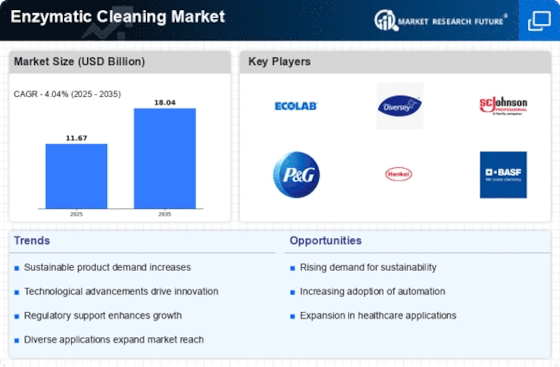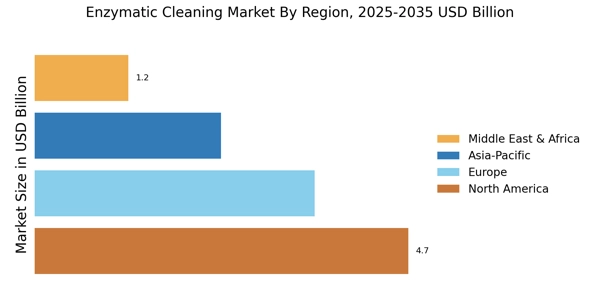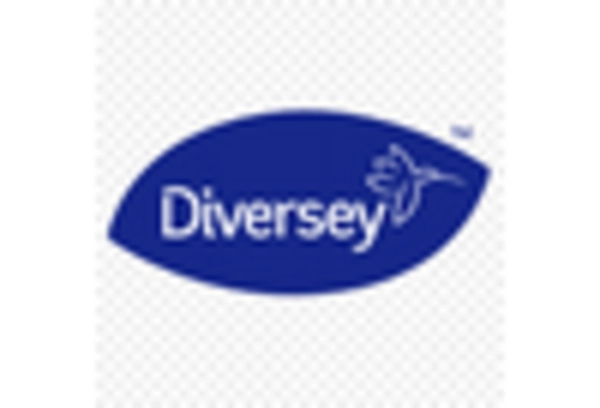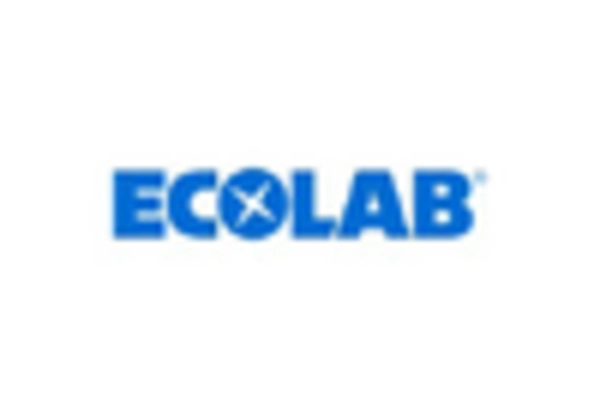Expansion of End-User Industries
The expansion of various end-user industries is contributing to the growth of the Enzymatic Cleaning Market. Sectors such as food and beverage, healthcare, and hospitality are increasingly adopting enzymatic cleaning solutions due to their effectiveness and safety. The food and beverage industry, in particular, is witnessing a surge in demand for enzymatic cleaners that ensure compliance with hygiene standards while being safe for food contact. Market data suggests that this sector alone is expected to grow at a rate of 7% annually, driven by the need for efficient cleaning solutions. As these industries continue to expand, the demand for enzymatic cleaning products is likely to increase, further solidifying the market's position.
Growing Awareness of Health and Hygiene
The heightened focus on health and hygiene is significantly influencing the Enzymatic Cleaning Market. As consumers become more conscious of cleanliness, particularly in sectors such as healthcare and food processing, the demand for effective cleaning solutions is surging. Enzymatic cleaners, known for their ability to break down organic matter and eliminate pathogens, are increasingly favored in these environments. Market data indicates that the healthcare segment is projected to account for a substantial share of the enzymatic cleaning market, with an anticipated growth rate of 6% over the next few years. This trend underscores the importance of maintaining high hygiene standards, thereby driving the adoption of enzymatic cleaning products.
Rising Demand for Eco-Friendly Solutions
The increasing awareness regarding environmental sustainability appears to be a driving force in the Enzymatic Cleaning Market. Consumers and businesses alike are gravitating towards eco-friendly cleaning products that minimize environmental impact. This trend is reflected in the market data, which indicates a projected growth rate of approximately 7% annually for enzymatic cleaners, driven by their biodegradable properties. As industries seek to comply with stringent environmental regulations, the demand for enzymatic cleaning solutions is likely to rise. Furthermore, the shift towards sustainable practices in sectors such as healthcare, food service, and hospitality is expected to bolster the market. The Enzymatic Cleaning Market is thus positioned to benefit from this growing preference for green cleaning alternatives.
Regulatory Support for Biodegradable Products
Regulatory frameworks promoting the use of biodegradable cleaning products are playing a crucial role in the Enzymatic Cleaning Market. Governments are implementing policies that encourage the adoption of environmentally friendly cleaning solutions, which is likely to enhance market growth. For instance, regulations that limit the use of harsh chemicals in cleaning products are pushing manufacturers to innovate and develop enzymatic cleaners that comply with these standards. This regulatory support is expected to create a favorable environment for the enzymatic cleaning market, with projections indicating a potential market expansion of 5% in the coming years. The alignment of regulatory initiatives with consumer preferences for safe and sustainable products is likely to further propel the industry forward.
Technological Innovations in Cleaning Solutions
Technological advancements are reshaping the Enzymatic Cleaning Market, leading to the development of more effective and efficient cleaning products. Innovations in enzyme formulations and delivery systems are enhancing the performance of these cleaners, making them suitable for a wider range of applications. For instance, the introduction of encapsulated enzymes allows for prolonged activity and targeted cleaning, which could potentially increase market penetration. Market data suggests that the segment of enzymatic cleaners designed for industrial applications is experiencing rapid growth, with an expected increase of 8% in the next few years. This technological evolution not only improves cleaning efficacy but also aligns with the increasing demand for specialized cleaning solutions across various sectors.


















Leave a Comment